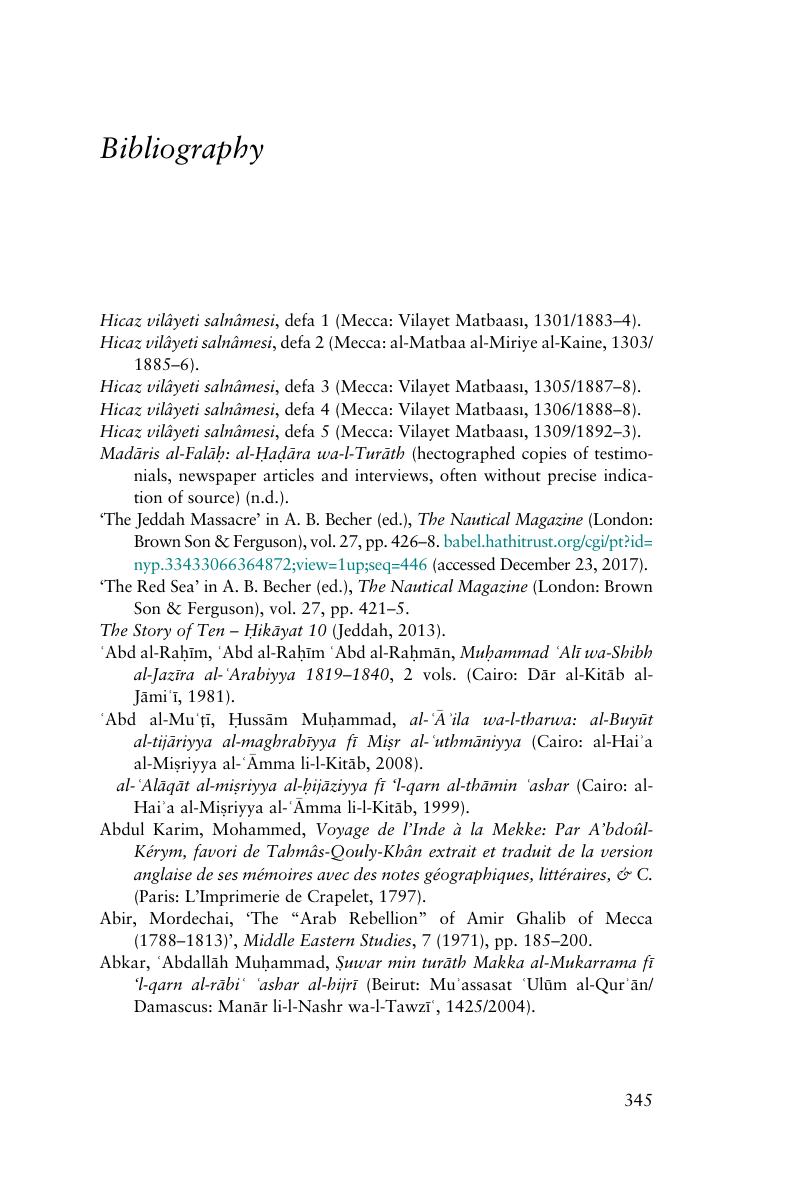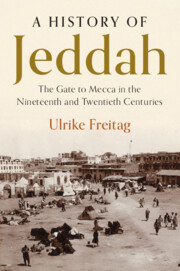Book contents
- A History of Jeddah
- A History of Jeddah
- Copyright page
- Maps
- Contents
- Figures
- Maps
- Tables
- Acknowledgements
- Note on Transliteration and Terminology
- 1 Introduction: Why Jeddah
- 2 Between Sea and Land: Jeddah through the Ages
- 3 The Changing Faces of Jeddah
- 4 The Changing Urban Space of Jeddah
- 5 Solidarity and Competition: The Socio-Cultural Foundations of Life in Jeddah
- 6 The Economic Lifelines of Jeddah: Trade and Pilgrimage
- 7 Governing and Regulating Diversity: Urban Government in Jeddah
- 8 The Disappearance and Return of Old Jeddah: On the Temporality of Translocal Relations
- Bibliography
- Index
- References
Bibliography
Published online by Cambridge University Press: 29 February 2020
- A History of Jeddah
- A History of Jeddah
- Copyright page
- Maps
- Contents
- Figures
- Maps
- Tables
- Acknowledgements
- Note on Transliteration and Terminology
- 1 Introduction: Why Jeddah
- 2 Between Sea and Land: Jeddah through the Ages
- 3 The Changing Faces of Jeddah
- 4 The Changing Urban Space of Jeddah
- 5 Solidarity and Competition: The Socio-Cultural Foundations of Life in Jeddah
- 6 The Economic Lifelines of Jeddah: Trade and Pilgrimage
- 7 Governing and Regulating Diversity: Urban Government in Jeddah
- 8 The Disappearance and Return of Old Jeddah: On the Temporality of Translocal Relations
- Bibliography
- Index
- References
Summary

- Type
- Chapter
- Information
- A History of JeddahThe Gate to Mecca in the Nineteenth and Twentieth Centuries, pp. 345 - 378Publisher: Cambridge University PressPrint publication year: 2020

